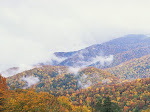What does the high price of gold have to do with the fate of the Amazon Rain Forest
Although our attention is focused on the disastrous BP Oil gusher in the Gulf, there is another eco-menace at work – it’s the price of gold. As the article in the side page (link) highlights, jittery investors in global stock markets are buying gold, the universal safe bet, driving the price of gold up to a near record high. The soaring price paid for gold is fueling a modern day gold rush -- much of it in ecologically sensitive areas.
Unfortunately, some of the best deposits are in ecologically critical rain forests. To make matters worse, gold mining is one of the most environmentally destructive processes ever invented.
“Gold mining, however, generates more waste per ounce than any other metal, and the mines' mind-bending disparities of scale show why: These gashes in the Earth are so massive they can be seen from space, yet the particles being mined in them are so microscopic that, in many cases, more than 200 could fit on the head of a pin. ….Extracting a single ounce of gold there—the amount in a typical wedding ring—requires the removal of more than 250 tons of rock and ore.” Source: Stock Block Web
In the Peruvian forest pictured above, mining is done using hydraulic mining of and uses toxic chemicals including cyanide and mercury to separate the gold from the deposits of mud and sand (found in river channels and flood plains). Mercury escaping from the process can form an organic form that biomagnifies in food chains. For an excellent article on the subject see: Mongabay Website
As the figure from Mongabay shows, gold mining can have a devastating impact on forests. This impact has been escalating dramatically over the past few years.
The figure in the sidebar (click title) demonstrates the strong inverse relationship between the value of gold and the value of stock markets.
Here is a question: How can the free market alone protect rain forests and other ecosystems from this kind of devastation. Post your thoughts?











How can the free market alone protect rain forests and other ecosystems from this kind of devastation? One answer:
ReplyDeleteThe same free markets that reacted to honeybee colony collapse disorder that began in 2006 with ... more pesticides and another 34% decline in their US population year on year in 2009?
http://www.guardian.co.uk/environment/2010/may/02/food-fear-mystery-beehives-collapse
These same free market forces have left the US importing 66% of our oil consumption, when the majority of world oil reserves are in highly volatile areas.
I think some people are beginning to wake up to these shortfalls though. In economics parlance we call these things "market failures".
From "Anonymous Insider"